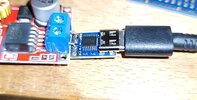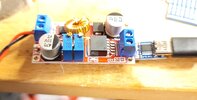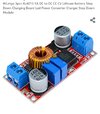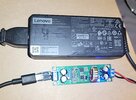When my partner and I travel, we carry a number of power bricks, resulting in a lot of weight and volume:
CPAP power supplies ×2, 12 volts @ 4+ amps
Computer power supplies ×2, recently upgraded to USB C PD.
Cell power chargers ×2 (iPhone and Samsung)
These chargers weigh a fair amount, and usually are in carry-on luggage so they don't go astray. Cruise ships pose an additional complication as there is usually an accessible power outlet in one location in the cabin.
My thought is to replace this collection of chargers with two USB C PD chargers of sufficient capacity. On Amazon, I found these USB C PD "power triggers" that put out 12 volts at up to 5 amps, with should cover the CPAPs.
It looks like a no-brainer from this point. A power supply with enough output current should take care of CPAP power, computer and cell phone charging. Has anybody tried an application like this? One question is how a power supply will handle load if too much is demanded. A CPAP draws the power it needs to run, which may include a surge when it's starting. Charging computers and phones can use what they get.
I am aware that not all PD supplies provide 12 volts, so that needs to be verified for any candidates.
Anything else to consider?
CPAP power supplies ×2, 12 volts @ 4+ amps
Computer power supplies ×2, recently upgraded to USB C PD.
Cell power chargers ×2 (iPhone and Samsung)
These chargers weigh a fair amount, and usually are in carry-on luggage so they don't go astray. Cruise ships pose an additional complication as there is usually an accessible power outlet in one location in the cabin.
My thought is to replace this collection of chargers with two USB C PD chargers of sufficient capacity. On Amazon, I found these USB C PD "power triggers" that put out 12 volts at up to 5 amps, with should cover the CPAPs.
It looks like a no-brainer from this point. A power supply with enough output current should take care of CPAP power, computer and cell phone charging. Has anybody tried an application like this? One question is how a power supply will handle load if too much is demanded. A CPAP draws the power it needs to run, which may include a surge when it's starting. Charging computers and phones can use what they get.
I am aware that not all PD supplies provide 12 volts, so that needs to be verified for any candidates.
Anything else to consider?





